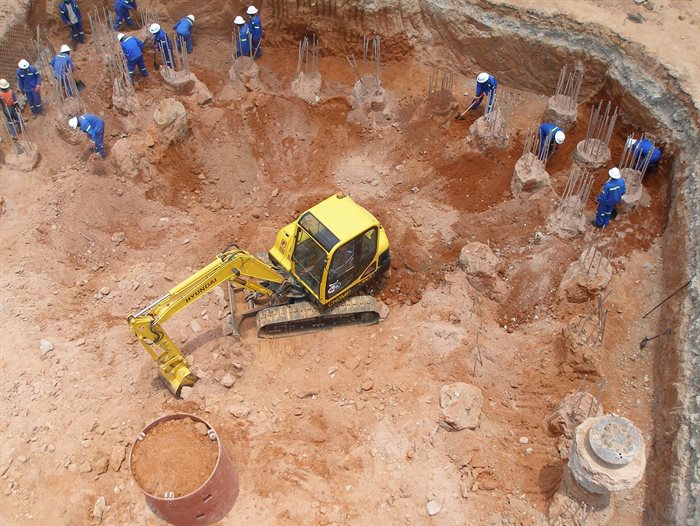
While deep excavations – for high-rise buildings, for instance – require specialised geotechnical assessment and design to offset the risk of failure, there are also risks attached to relatively shallow excavations of just a few metres, he says.
“A cubic metre of soil might look innocuous, but it typically weighs more than a small car and can weigh almost two tonnes – so any scale of ground failure can cause considerable harm to anyone nearby. We know of fatalities in excavations as shallow as 1m,” he said. “Even if people are not harmed, such failures can lead to costly delays in the project timeline.”
Not only does an excavation wall collapse require immediate attention to allow construction to proceed, it may also hinder a range of subcontractor activities – who still need to be paid even if their equipment and personnel are standing idle. Often projects are conducted close to other structures, which may be damaged or threatened by a nearby ground failure.
A fundamental starting point is a thorough technical analysis of ground conditions in the early stages of project planning. The Geotechnical Division of the South African Institute of Civil Engineering (SAICE) Code of Practice for Geotechnical Investigations provides excellent, industry-relevant guidelines on how to proceed with a geotechnical investigation for a wide range of infrastructure development projects.
“A ground investigation usually begins with a desk-top study which incorporates valuable information from previous studies about the area where your client will be working,” he said. “A local professional geologist will also have a level of prior knowledge to efficiently highlight the most salient aspects of risk.”
This will usually be followed by the digging of test pits to expose the ground profile, or boreholes subject to the nature of the activity, e.g., very deep excavations, heavily-loaded structure/s. Soil samples are generally sent for laboratory testing for further confirmation of the engineering geologist’s interpretation and for stability assessments. The resulting report will contain recommendations for the structural and civil engineers, allowing them to mitigate the identified subsurface risks during the design phase of the development.
“It is also good practice for this interpretive report to be fully reviewed by experienced professionals,” said Cock. He highlighted, though, that the investigation not only needs quality research, insights and recommendations; it also needs to be properly applied when construction work begins. This is best done by a qualified engineering geologist/geotechnical engineer with sufficient experience to identify warning signs. The size and or value of the project should not matter.

“The geological and geotechnical models for a project can be developed with a relatively high level of confidence but there can be complications which are not foreseen. Ultimately, the models are based on ‘isolated’ exposures of the subsurface, spread throughout a site, with interpolation required,” he said. “If the contractor does not have their own specialist on site, then the consultant can play a valuable role in the physical inspection and monitoring of the site on regular intervals.”
The inspection and monitoring process can be initiated once construction starts with the opening of trenches which provide a more continuous exposure of the ground profile across a site, for example, allowing the engineering geologist/engineer to confirm that what they see is consistent with the research and test work conducted for the report.
“It is a concern that while many engineering disciplines are represented on a construction site, one seldom finds an engineering geologist closely engaged with the implementation of these projects,” he said. “This is particularly important in the early phases, until construction reaches ground level at least, or some of the most serious risks facing a project may be overlooked.”